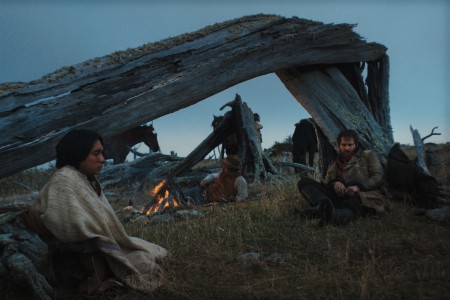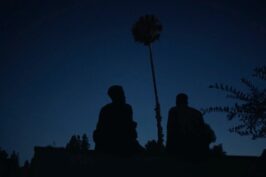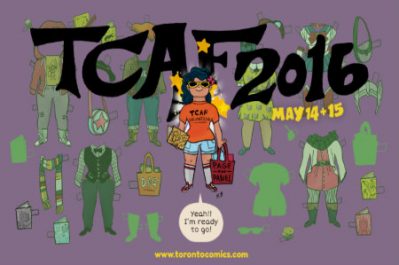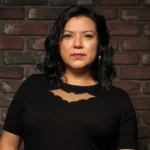The Settlers (Los Colonos) is first feature film by Chilean filmmaker Felipe Gálvez Haberle. In this quasi-Western film, we are taken back in time to a remote area of Chile where wealthy land owners are clearing the land for further agricultural and farming developments… or so it appears.
Tierra del Fuego, Chile, 1901. José Menéndez (Alfredo Castro), a wealthy landowner sends three horsemen set on an expedition in order to secure his large property. Along with reckless British lieutenant MacLennan (Mark Stanley) and Bill, an American mercenary (Benjamín Westfall) is mestizo marksman Segundo (Camilo Arancibia), who soon enough realizes their true mission is to violently “remove” the Indigenous people from their land.
We experience the three men’s journey through Segundo’s point of view. At first, he is unsure of the other two men, their intentions and motivations. He also is not fully aware of what the actual mission of this journey will entail.
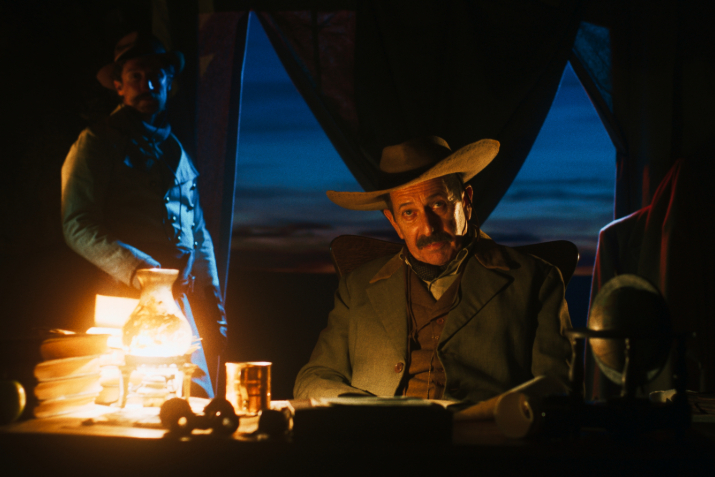
Background: Benjamín Westfall as US mercenary Bill
On the road, the trio meets some interesting and some unsavoury characters. For instance, they meet a man (Mariano Llinás) in charge of determining border lines between Chile and Argentina. He seems friendly enough. As they move further into the area, they encounter members of the Selk’nam (Ona) nation. This is where things become dangerous; Segundo witnesses violence he had never encountered before. Here, he begins to question everything… including how he fits into this notion of taking over the land and inflicting violence against people who look like him.
Later on their trip, the men also meet Colonel Martin (Sam Spruell) who proves to be one of the most savage men on that land. More violent acts are perpetrating by Colonel Martin that continue to mark Segundo who pushes through this expedition. It is after at this point in the story that an Indigenous woman named Kiepja (Mishell Guaña) is ‘given’ to the men and along with Segundo, becomes another guide and aid on this arduous journey.
Time passes and eventually the men complete their so-called mission albeit some casualties along the way. This is where the second part of the film beings. Menéndez and his family get the land and become wealthy and powerful in the eyes of the government. Segundo and Kiepja move to Chiloé Island in an effort to return to their roots in some way – to live off the sea and the land away from ‘civilization’.
In this second part, we meet Marcial Vicuña (Marcelo Alonso), the envoy of the president of Chile. Vicuña is sent to visit Menéndez to discuss how he went about acquiring the large expanse of land as there have been rumours about the massacre of the Indigenous population in that area. In some bureaucratic way, the goverment is pretending to investigate and clarify said rumors.
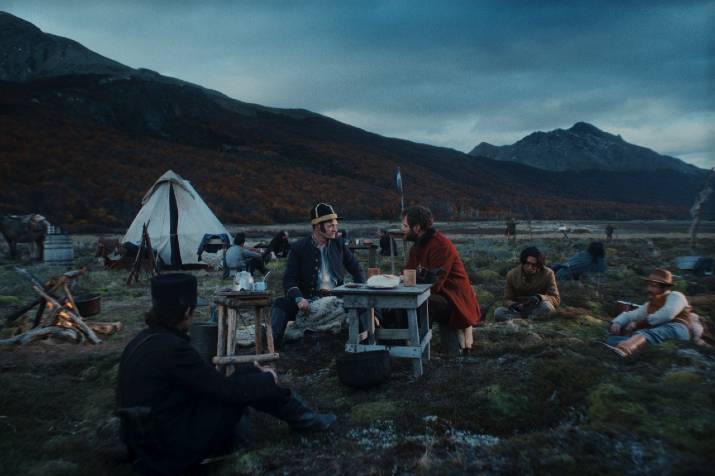
To the right: Camilo Arancibia as Segundo and Benjamín Westfall as US mercenary Bill
Gálvez Haberle describes the film’s two parts as follows, “the story opens with Menéndez, who is the driving force behind everything that happens in the film, and why it ends with him in his home, where the wealth he acquired from his large land and sheep holdings, built on acts of barbarity and death in the name of “civilization”, is clearly visible. The breath-taking landscapes with their bright, bold colours are left behind as we enter a dark and frozen interior. The first part shows what happened, the acts of violence. The second part consists of words. The violence, from then on, is in the language, in the words pronounced by Menéndez, the brutality of which he assumes with a clear conscience. It also lies in the cynical attitude of Vicuña.”
The manner in which the second part leads us to the film’s denouement is quite interesting. We witness Vicuña visiting Segundo and Kiepja (now Segundo’s wife) to conduct his investigation. When Segundo provides a graphic account of what transpired on that expedition with Bill and MacLennan, Vicuña pretends to acknowledge it but in fact dismisses it. He then sets up a photo session in which he aims to ‘capture’ Segundo and Kiepja in their home yet he tries to force Kiepja to pose in an unnatural way. In Gálvez Haberle’s own words, “Vicuña owns the camera and has the power to rewrite history. He doesn’t care what happened to the [Indigenous] populations. He just needs to capture their image.” As such, Vicuña continues to perpetuate violence against Indigenous people.
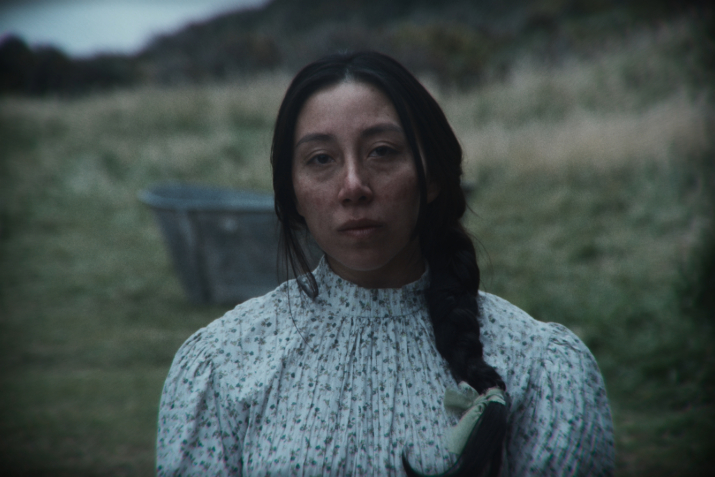
When describing the inspiration for and purpose of the film, Gálvez Haberle explains, “[t]he film drew its inspiration from novels, popular legends, paintings, and cinema, and not just from these events alone. The Settlers isn’t a true reconstruction of history. Rather it is a reflection on how fiction, and especially cinema, can modify and distort it, and even rewrite it.”
Another great tidbit about The Settlers is Gálvez Haberle’s decision to use a 4:3 aspect ratio which creates an almost claustrophobic and ‘old time’ look and feel in the film. With the keen eye of cinematographer Simone D’Arcangelo, the film captures the awe-inspiring Patagonia scenery along with some excellent intimate interior shots along with more graphic scenes. The look and in part the feel of The Settlers is somewhat reminiscent of another South American film Jauja (2014) directed by Lisandro Alonso . Both films are set in Patagonia and some of their elements overlap; however, the stories differ in the themes each aim to explore. I would recommend these as a double feature; especially if you are a cinephile.
What I appreciate about The Settlers is the way in which it challenges what we are taught (and not taught) in history books. It is asking us to question said history and to acknowlege that all colonies were established through violence and genocide. There are no real heroes in history, in my opinion. As such, we are left with much to ponder and much to question.
For my Spanish speaking friends, I leave you with my conversation with the film’s director Felipe Gálvez Haberle. Espero les parezca interesante y puedan ver esta película en la pantalla grande.
The Settlers (Los Colonos) is currently showing in cinemas across the US and Canada.
Photos courtesy of Quijote Films, Films We Like and MUBI.

